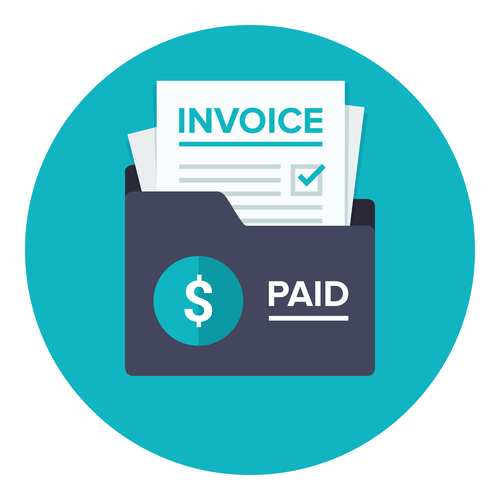Special Journals Financial Accounting
Фонтан казино официальный сайт
28/06/2020Adderall Oral: Uses, Side Effects, Interactions, Pictures, Warnings & Dosing
02/09/2020
It is similar to the salesjournal because it has a corresponding subsidiary ledger, theaccounts payable subsidiary ledger. Since the purchases journal isonly for purchases of inventory on account, it means the companyowes money. To keep track of whom the company owes money to andwhen payment is due, the entries are posted daily to the accountspayable subsidiary ledger. Accounts Payable in the general ledgerbecomes a control account just like Accounts Receivable.
- Just like the purchases journal, only credit sales are recorded when preparing a sales journal.
- In this example, we will assume that all sales are made on terms of 2/10, n/30 and that the gross method is used to record sales discounts.
- For example, subsidiary ledgers, such as the accounts receivable ledger, provide data about the aging and collectability of receivables.
- In special journals, journalizing can be done by a number of employees simultaneously rather than one employee, thus the business transactions can be written up much more quickly.
- In other words, transactions are recorded into the general journal as they occur.
How to Make a Sales Journal Entry in Your Books
- We would use some genericcolumn title such as “other” to represent those cash transactionsin the subsidiary ledger though the specific accounts wouldactually be identified by account number in the special journal.
- We wouldenter these four types of transactions into their own journals,respectively, rather than in the general journal.
- Recall that the accounts receivablesubsidiary ledger is a record of each customer’s account.
- This journal entry would be followed by a journal entry for every other transaction the company had for the remainder of the period.
- (Figure)Record the following transactions in the cash receipts journal.
The ledger accounts where these postings are recorded differ for various types of special journals. Transactions recorded in special journals are subject to pre-transaction authorization. If the transaction does not involve cash, it will be recorded inone of the other special journals. If it is a credit sale (alsoknown as a sale on account), it is recorded in the sales journal.If it is a credit purchase (also known as a purchase on account),it is recorded in the purchases journal. At the end of the month, the amount column in the journal is totaled.
Subsidiary Ledger Fraud6
One benefit ofusing special journals is that one person can work with thisjournal while someone else works with a different specialjournal. Just like the purchases journal, only credit sales are recorded when preparing a sales journal. On the other hand, assets sold in cash are recorded in the cash book and the sales of assets on credit are recorded in the proper journal. Modern accounting systems do this type of categorization automatically.
More Examples of Special Journals
Note there is a single column for both the debit to Accounts Receivable and the credit to Sales, although we need to post to both Accounts Receivable and Sales at the end of each month. There is also a single column for the debit to Cost of Goods Sold and the credit to Merchandise Inventory, though again, we need to post to both of those. The transactions would be posted in chronological order in the sales journal. As you can see, the first transaction is posted to Baker Co., the second one to Alpha Co., then Tau Inc., and then another to Baker Co. On the date each transaction is posted in the sales journal, the appropriate information would be posted in the subsidiary ledger for each of the customers. As an example, on January 3, amounts related to invoices and are posted to Baker’s and Alpha’s accounts, respectively, in the appropriate subsidiary ledger.
- Likewise, external users want this data (balance sheet, income statement, and statement of cash flows) to make decisions such as whether or not to extend credit to Gearhead.
- You may use itemsin the right-hand column more than once or not at all.
- It is much easier and simple to summarize all sales transactions during a week, for example, and transfer the total amount to general records.
- And, you’re increasing your Cost of Goods Sold (COGS) Expense account.
- Note there isa single column for both the debit to Accounts Receivable and thecredit to Sales, although we need to post to both AccountsReceivable and Sales at the end of each month.
- Read on to learn how to make a cash sales journal entry and credit sales journal entry.
- The ethical accountant must be vigilant to ensure that the ledgers remain balanced and that proper internal controls are in place to ensure the soundness of the accounting system.
How are the entries from a sales journal to ledgers that are being posted?
Likewise, external users want this data (balance sheet, income statement, and statement of cash flows) to make decisions such as whether or not to extend credit to Gearhead. This journal should record non-routine transactions, and many of these transactions should be approved by the head of the accounting department or by someone with similar authority. One journal records similar transactions, which simplifies future references to any of them. Special journals allow the recoding of numerous repetitive transactions in one journal in one line. For example, a merchandise purchase is recorded on a single line that registers credit to the supplier’s account, the supplier’s name, the date and the amount, and any other desired information. In large businesses, where transactions of various categories occur hundreds or thousands of times each month, it is inconvenient to record them in the general journal.

How much are you saving for retirement each month?

Match each of the following parts ofCrossroad’s accounting information system in the left-hand columnwith the appropriate item(s) from the right-hand column. You mayuse items in the right-hand column more than once or not at all.There may be several answers for each item in the left-hand column.You may choose items in the right-hand a special journal that is intended only for credit sales is called a journal. column more than once. LO 7.4Maddie Inc. has the following transactionsfor its first month of business. Match each of the following parts of Green’saccounting information system in the left-hand column with theappropriate item(s) from the right-hand column. You may use itemsin the right-hand column more than once or not at all.

The Purchases Journal
The four main special journals arethe sales journal, purchasesjournal, cash disbursements journal, andcash receipts journal. These special journals weredesigned because some journal entries occur repeatedly. Forexample, selling goods for cash is always a debit to Cash and acredit to Sales recorded in the cash receipts journal. Likewise, wewould record a sale of goods on credit in the sales journal, as adebit to accounts receivable and a credit to sales. Companies usinga perpetual inventory system also record a second entry for a salewith a debit to cost of goods sold and a credit to inventory. Accounting information systems were paper based until theintroduction of the computer, so special journals were widely used.When accountants used a paper system, they had to write the samenumber in multiple places and thus could make a mistake.
The Cash Receipts Journal

Reduction in Detailed Recording

